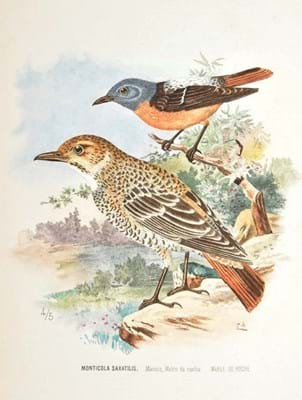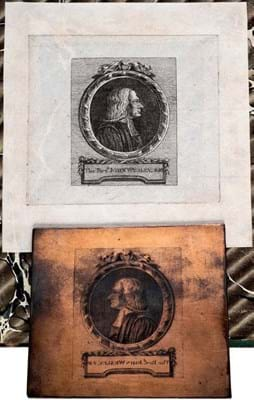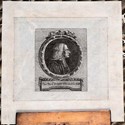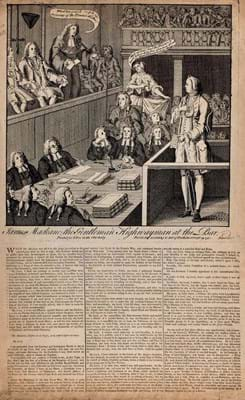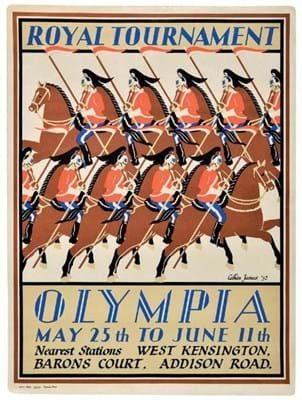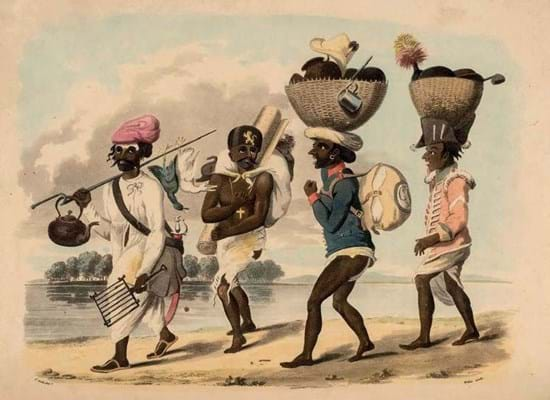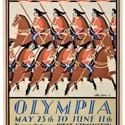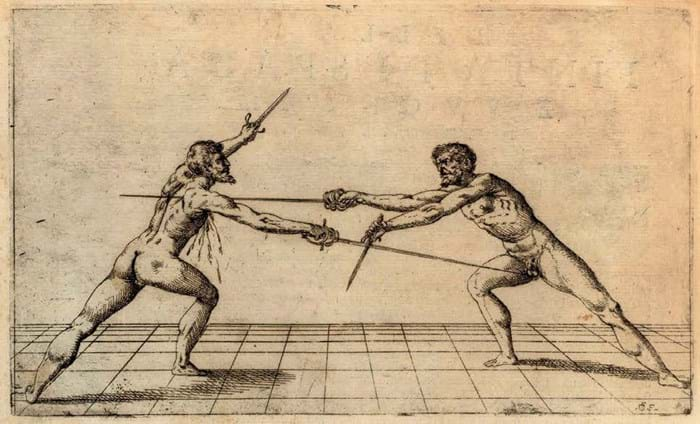Running to almost 900 lots, a mammoth May 27-28 sale held by Dominic Winter (20% buyer’s premium) was comparable with was comparable with those huge auctions that are sometimes seen in Germany.
It was also one that demonstrated in its detailed and extensive cataloguing entries that time spent in lockdown had been put to good use.
Darwin battered but best price
The sale’s top-priced lot was part of the natural history library of David Wilson, a poor 1859 first of Darwin’s On the Origin of Species that, despite many faults of condition and missing content still managed £21,000.
More from this property will follow in the autumn, but here avian attractions included, at £4500, a two-volume, 1907-10 first of Godman’s Monograph of the Petrels and Claude Wyatt’s British Birds… of 1894- 99 at £3400. Very much the rarest item was a Catalogo illustrado das aves de Portugal, published in Lisbon in 1903-07, that made £2600.
Containing a total of 40 coloured litho and chromolitho plates, all signed CA, it presented the only completed parts of a work on which King Carlos I of Portugal was still engaged when, in 1908, he was assassinated. Only one other copy appears in auction records.
Preceded only by More’s Ferns… of 1855, Johnstone & Croal’s Nature- Printed British Sea-Weeds, the four volumes of 1859-60 containing 200 coloured plates by Henry Bradbury, was only the second example of ‘nature-printing’ seen in England. It made what may be a record £1250.
An 1898 first of Lydekker’s Deer of All Lands sold well at £1750, as did an 1863 first of The Naturalist on the River Amazons… at £2100. Written at Darwin’s suggestion, the latter is Henry W Bates’ account of 11 years spent in the region, where he formed a collection of some 14,000 insects.
Life on Mars?
In 1907, Alfred Russel Wallace, whose work on the origin of species had decades earlier been rather overshadowed by that of Darwin, published Is Mars Habitable?, a rebuttal of astronomer Percival Lovell’s claim that lines visible on the surface of Mars were canals and evidence of intelligent life.
Wallace concluded that low temperatures, atmospheric pressure and the lack of water on Mars, made higher forms of life impossible and the planet uninhabitable. Still in its dust jacket, this first made a record £3600.
The traditional opening map section included among its 130 lots several of Polish interest from a large consignment that will also feature in future sales. Another example of Blaeu’s map of the River Dneiper offered in their January auction was one such, but the top lot here at £2300 was a coloured example of Hondius’ Nova Poloniae… of c.1630.
British attractions included, at £2700, an example in period colour of Saxton’s 1579 map of Somerset.
Their bindings slightly soiled and faded, 1900 firsts of two early Churchill works, Ian Hamilton’s March and London to Ladysmith via Pretoria, inspired by his Boer War experiences, sold together at £5400. The former was inscribed “From Winston Churchill - 1902”, and both were most likely presented to Percy W Brown of the Gordon Highlanders.
Sold at £1800 was a rarity that emerged from a large consignment of otherwise rather unprepossessing ephemeral material. An 1847 first in wrappers of The Life and Sufferings of Leonard Black. A Fugitive from Slavery was the work of man who lived as a slave for 20 years in Maryland before running away to join his brothers in New England.
Previewed in ATG No 2243 and now sold at £8000 was one of only two copies recorded at auction of John Washington’s Eskimaux and English Vocabulary of 1850. It was compiled for use by those searching for a missing expedition to find Northwest Passage expedition, led by Sir John Franklin, that had departed English shores five years earlier.
A copy of Oliver Byrne’s famous explanation, by means of coloured diagrams, of The First Six Books of the Elements of Euclid…, a work once described as “one of the oddest and most beautiful books of the whole century”, made £4800.
Second day
Much of what was offered on the second day – including a great many job lots as well as individually offered letters, manuscripts, and documents of all kinds – was also catalogued at some length. Unfortunately, much of that material does not lend itself to brief description of any worth, but noted below are just a few examples.
Dating from the years 1381-1431 was a group of four documents relating to the early years of the Grimaldi family, and specifically the Antibes branch of a dynasty that is so closely entwined with the history of the Republic of Genoa and the Principality of Monaco. The saleroom sent a note of the auction to the Archives Municipal d’Antibes, which responded almost immediately and on the day secured the lot at £5600.
Bid to £2900 was a ticket granting a Doctor Lind access to ‘Admiral Lord Nelson’s Funeral Procession’, and the cataloguer wondered whether this might be James Lind.
The doctor was co-founder of the Royal Society of Edinburgh, sometime physician to the royal household and mentor to Shelley at Eton. He was related to James Lind, a physician famously associated with the use of citrus fruits as a preventative against scurvy.
Sold at £1300 was a letter of 1971 that Agatha Christie wrote to the actor Lionel Jefferies to tell him how much she had enjoyed the film version of a favourite book of her childhood, Edith Nesbit’s The Railway Children, that he had both scripted and directed.
Paul gets to the point
Running to 40 lots, many of them multiples, a fine fencing and swordsmanship collection begun by Leon Paul (1881-1963), the founder of a famous London fencing equipment business, and later added to by his family, included several major works.
The earliest, a 1568 edition of a standard reference, Camillo Agrippa’s Trattato di Scienza d’Arme… (first issued in 1553) sold at £3400, but the top lot, at £4000, was a 1606 first of Nicoletto Giganti’s Scola, overo Teatro… An influential work on the use of the rapier and the dagger, it includes 42 full-page engraved illustrations by Odoardo Fialetti, one of which is shown here.
Despite a 30-year ban on unauthorised editions, pirated Italian, French and German language editions quickly appeared at the time and even in the last decade of this century two new English language editions have found their way into print.


